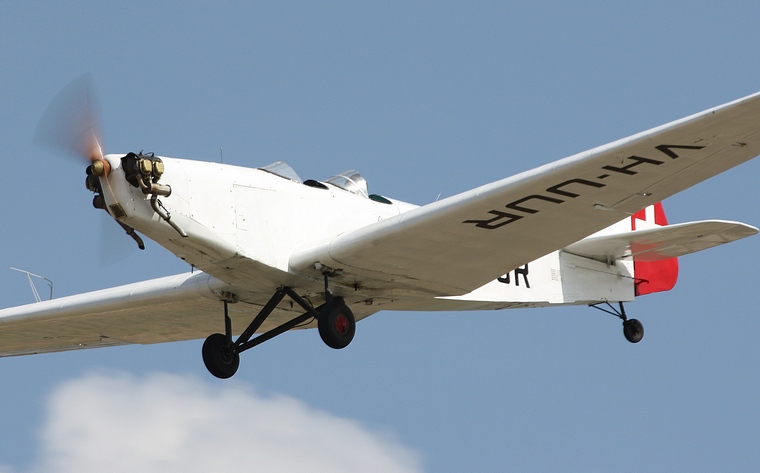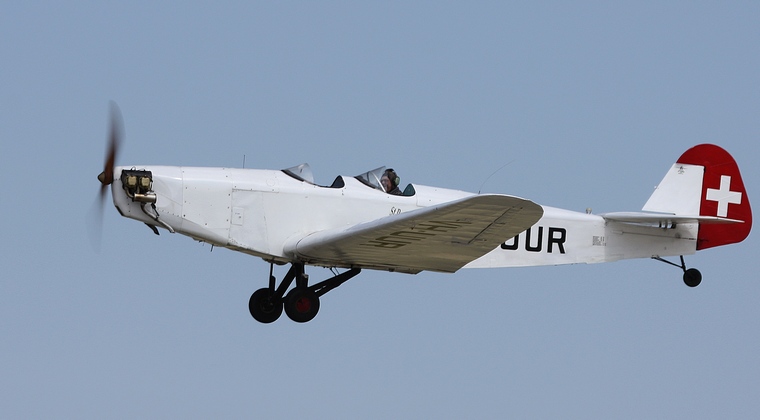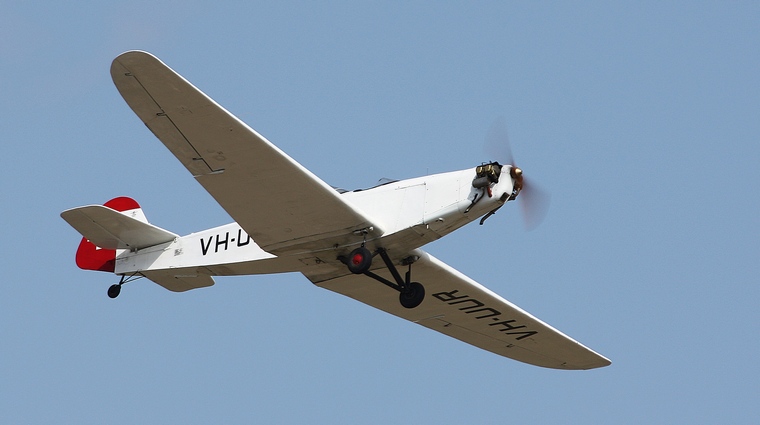Klemm L25 DII VH-UUR
By Willie Bodenstein
Designed as a light leisure and training aircraft, the Klemm L25 VH-DUR, that was displayed at Oshkosh in the thirties served in a totally different and at times heroic role in Australia.

Roy Fox, of Sidney Australia packed his immaculate and almost original 1932 Klemm in a container and together with a equally superb 1932 Comper Swift shipped the precious cargo all the way to the USA and to Oshkosh for the 2009 EAA Fly-in. Since both aircraft were on the Australian Historical Register, Roy had to get for permission from the Ministers of Arts and guarantee that they would be returned.
VH-UUR started its career in Australia as one of a pair of Klemm's purchased to support missionaries working on the Islands of Papa in New Guinea. Aptly named St. Peter and St. Paul it was the latter that that during the Second World War evacuated the missionaries and their children as the Japanese advanced, packing the children into the front cockpit and baggage compartment.
Although St. Paul never fired a shot in anger it did not survived unscathed and whilst restoring her, quite a few bullet holes were find in her plywood covered fuselage. During the restoration the original Daimler engine was replaced with a more modern Continental and the ordinary house paint, applied with a brush, stripped and the whole aircraft repainted. Today St Paul is the oldest flying humanitarian aircraft flying in the world.

The Klemm was the brainchild of Hans Klemm of Germany and more than 600 L25's were built in thirty different versions and manufacturing licenses were sold to both the UK and USA. Klemm's first design was the L 15 completed in 1918 and initially powered by an Indian motorcycle engine of 5.5kW it flew in 1919 powered by an 8.8 kW Harley Davidson engine. The L25 with its 13m wingspan had a maximum takeoff weight of 720 kg and maximum speed of 160 km/h, could reach 4600 m and had a range of 650 km.
In 1928 Friedrich-Karl von Koening-Warthausen flew a Klemm L20 from Berlin to Moscow. Not content with his achievement he then set about and successfully circumnavigated the globe. In 1930 Mohamed Sidki, an Egyptian flew his Klemm L25a from Berlin to Cairo and wrote the following to Hans Klemm: “your beautiful little machine has carried me through wind, snow and torrential rain without any damage to myself, the plane and the engine. A year later, Elly Beinhorn flew her KI26 from Europe to Australia and in the process won the Hindenburg Cup.

Klemm Aircraft continued with new designs and when World War II started close to 2,000 of the K135, a cranked wing mono plane with a more rounded fuselage, were built by in their factory as well as by Fieseler and Moravan Otrokovice for the Luftwaffe to be used as trainers. The restriction placed on the manufacture of aircraft by the Allies after the end of the war spelt the end of the company, it was however reformed in 1952 and its first new model, the K1 1 07 A flew in 1956. In 1959 the company was taken over by Bolkow and the illustrious Klemm name would have disappeared if not for the dedication of people like Roy Fox.
|
   |























